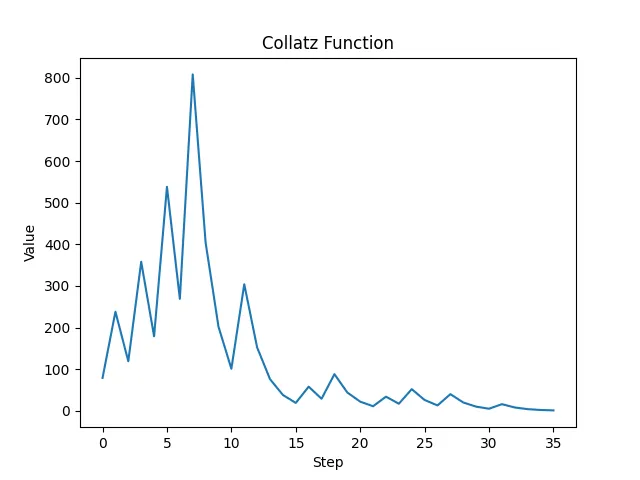Dynamic Decoration of Methods in Python

Original image created with DALL·E
Decorators are an extraordinary tool to modify or enhance the behavior of functions and methods without having to modify their source code directly.
Nevertheless, the main constraint of decorators is that they need to be defined statically within the same scope where they are applied, otherwise a “NameError” or “AttributeError” exception is raised. For example, a method of a parent class cannot be directly utilized as a decorator for a child class, just as a method of a component class cannot be employed to decorate the methods of the class that uses that component.
Motivation
The primary motivation behind deciding to support Dynamic Decoration was
to facilitate method decoration across classes that are merged with
mergeclasses , which is a key aspect of the DynDesign project
discussed in detail in the previous article of this series.
At a later time, I realized can the Dynamic Decorators have applications beyond the merged classes, allowing developers to use as decorators - methods from ancestor classes
class Parent:
def method_from_parent:
...
class Child(Parent):
@method_from_parent
#^^^^^^^^^^^^^^^^^^ NameError: name 'method_from_parent' is not defined
@decoratewith("method_from_parent")
# Works!!
def decorated_method(...):
...
methods from component classes
class Component:
def method_from_component:
...
class Composite:
def __init__(self):
self.component = Component()
@component.method_from_component
#^^^^^^^^^ NameError: name 'component' is not defined
@decoratewith("component.method_from_component")
# Works!!
def decorated_method(...):
...
functions built at runtime
class RuntimeDecorated:
@decoratewith("runtime_built")
def decorated_method(...):
...
runtime_decorated = RuntimeDecorated()
runtime_decorated.runtime_built = build_decorator()
More information about the above use cases can be found here.
Dynamic Decorators in action
The current article picks up where the previous one left off, which involved the utilization of a Python script to show the behavior of Collatz functions. The script has a number of optional arguments, and is implemented by associating to each option an optional class, which is merged depending on whether the corresponding option is set or not (the complete code for the examples presented in the articles of this series is available here).
#collatz_output_graph.py
import argparse
from dyndesign import mergeclasses
import matplotlib.pyplot as plt
class CollatzGraph:
def __init__(self):
self.sequence = []
def output_number(self, n):
self.sequence.append(n)
def output_graph(self):
plt.plot(self.sequence)
plt.xlabel("Step")
plt.ylabel("Value")
plt.title(f"{self.FUNCTION_NAME} Function")
plt.show()
...
class CollatzOutput:
def output_number(self, n):
print(f"{n}; ", end='')
def output_sequence(self):
print(f"{self.FUNCTION_NAME} sequence starting from {self.n} is:")
self.output_number(self.n)
for n in self.get_collatz_sequence(self.n):
self.output_number(n)
print()
if __name__ == "__main__":
parser = argparse.ArgumentParser(description='Calculate Collatz sequence.')
parser.add_argument('n', help='an integer to calculate the Collatz sequence')
parser.add_argument('-c', action='store_true', dest='custom_collatz')
parser.add_argument('-g', action='store_true', dest='collatz_graph')
args = parser.parse_args()
CollatzMerged = mergeclasses(CollatzSequence, CollatzOutput)
if args.custom_collatz:
CollatzMerged = mergeclasses(CollatzMerged, CollatzCustom)
if args.collatz_graph:
CollatzMerged = mergeclasses(
CollatzMerged,
CollatzGraph,
invoke_all=['output_number']
)
collatz = CollatzMerged(args.n)
collatz.output_sequence()
if args.collatz_graph:
collatz.output_graph()
The first problem that I want to address is the code duplication of
statement if args.collatz_graph at the bottom of the script, to call
“output_graph” in case option “-g” is selected: that statement also
appears 4 lines above, in clear violation of the DRY principle.
To avoid this repetition, the **decoratewith** meta decorator
provided by DynDesign package can be used to dynamically decorate the
method “output_sequence” by passing “output_graph” as decorator name,
instead of calling method “output_graph” at the end of the script, so
that the script code becomes
#collatz_graph_decorator.py
from dyndesign import mergeclasses, decoratewith
...
class CollatzGraph:
def output_number(self, n):
self.sequence.append(n)
def output_graph(self, func):
self.sequence = []
func(self)
plt.plot(self.sequence)
...
class CollatzOutput:
...
@decoratewith("output_graph")
def output_sequence(self):
...
...
collatz = CollatzMerged(args.n)
collatz.output_sequence()
where method “output_graph” is converted into a decorator by adding
argument “func” after “self” and by including the func(self) call in
decorator’s body. Also, constructor __init__ of “CollatzGraph” can
now be removed as “self.sequence” is initialized in “output_graph” just
before calling “func”.
This highlights another advantage of decoratewith : the syntax of
the dynamic decorators is simpler if compared to the syntax of built-in
decorators in Python, which involves defining wrapper functions:
def builtin_decorator(func):
def wrapper():
...
func()
...
return wrapper
As expected, the code presented in this section is a refactored version that yields identical results to its previous implementation:
$ python collatz_decorators.py -g 79
Collatz sequence starting from 79 is:
79; 238; 119; 358; 179; 538; 269; 808; 404; 202; 101; 304; 152; 76; 38; 19;
58; 29; 88; 44; 22; 11; 34; 17; 52; 26; 13; 40; 20; 10; 5; 16; 8; 4; 2; 1;

Multiple Decorators
Multiple decorator names can be passed to decoratewith , allowing
for the corresponding decorator methods to beapplied in nested
chain , as documented here.
In order to test this feature, I demonstrate an example below by adding a new ‘-s’ option to the script, which prints out relevant statistics about the Collatz sequences. For this purpose, a new class called ‘CollatzStatistics’ can be defined and optionally merged with the existing classes:
class CollatzStatistics:
def output_number(self, n):
self.max = max(self.max, n)
self.count += 1
def output_stats(self, func):
self.max = 0
self.count = 0
func(self)
print(f"Max value reached: {self.max}")
print(f"Sequence length: {self.count}")
The decorator name “output_stats” can then be passed to decoratewith
after “output_graph”, resulting in the nested execution of the two
decorators:
@decoratewith("output_graph", "output_stats")
def output_sequence(self):
...
Finally, the class can be merged to “CollatzMerged”:
...
parser.add_argument('-s', action='store_true', dest='collatz_statistics')
...
if args.collatz_statistics:
CollatzMerged = mergeclasses(
CollatzMerged,
CollatzStatistics,
invoke_all=['output_number']
)
where the overloading of “output_number” instances in other merged
classes is prevented by passing the decorator name again in the
invoke_all list, just like when merging “CollatzGraph”.
NOTE: It could be argued that the method’s name “output_number” does not align well with the function of updating the statistics, and the method’s functionality in all the classes where it is implemented may be better described by a more generic name such as “process_number”. Anyway, to maintain clarity across different versions of the script, I opted to retain the original name.
The code above gives the expected results with any combination of options:
$ python collatz_statistics.py -s 79
Collatz sequence starting from 79 is:
79; 238; 119; 358; 179; 538; 269; 808; 404; 202; 101; 304; 152; 76; 38; 19;
58; 29; 88; 44; 22; 11; 34; 17; 52; 26; 13; 40; 20; 10; 5; 16; 8; 4; 2; 1;
Max value reached: 808
Sequence length: 36
$ python collatz_statistics.py -sg 79
Collatz sequence starting from 79 is:
79; 238; 119; 358; 179; 538; 269; 808; 404; 202; 101; 304; 152; 76; 38; 19;
58; 29; 88; 44; 22; 11; 34; 17; 52; 26; 13; 40; 20; 10; 5; 16; 8; 4; 2; 1;
Max value reached: 808
Sequence length: 36
# Graph "Collatz Function" is correctly displayed
$ python collatz_statistics.py -sc 79
Collatz-like ternary sequence starting from 79 is:
79; 159; 53; 157; 315; 105; 35; 103; 207; 69; 23; 67; 135; 45; 15; 5; 13;
27; 9; 3; 1;
Max value reached: 315
Sequence length: 21
...
Multiple Instances of Decorators
In case of multiple decorators for a single decorated method, developers
can usually choose from two alternative implementation options, both of
which are fully supported by decoratewith : - keeping distinct names
for multiple decorators and pass them all as decoratewith arguments,
like in the example above, or - using one generic decorator name for
multiple decorator instances and passing that name in the invoke_all
list of mergeclasses , so that all the instances of the decorator in
the merged classes are invoked.
The code above uses option #1, but it can be modified to use option #2
as follows (the complete code is available here): - Decorators
“output_graph” and “output_stats” are renamed to “output_wrapper”, -
@decoratewith("output_graph", "output_stats") is
then simplified to@decoratewith("output_wrapper") , and
- decorator name “output_wrapper” is appended in turn to the
invoke_all list in the last mergeclasses call, which is thus
changed to
CollatzMerged = mergeclasses(
CollatzMerged,
CollatzStatistics,
invoke_all=['output_number', 'output_wrapper']
)
Multiple Decorators vs Multiple Decorator Instances
Both choices have no significant impact on the overall performance, but
they do have design implications with advantages and disadvantages: -
keeping distinct names can improve code readability , since you can
give a meaningful name to each decorator, instead of relying on generic
names, such as “_wrapper”; on the other hand - **using a single name*
for multiple decorator instances is one step forward in terms of
adhering to the Open-Closed Principle , as it allows for easier
extension to other merging classes in the future without the need to
pass new decorator names as decoratewith arguments.
Ultimately, the choice between using distinct names or a single generic name for decorators should depend on the specific context and requirements of the project. I will proceed with option #2 in the next article, where I will provide practical examples of the mentioned advantage.
Conclusion
The decoratewith meta decorator from DynDesign package offers an
easy-to-use solution for Dynamic Decoration, allowing developers to use
decorators from ancestor, component ormerged classes , and
even to create decorators at runtime . Overall, Dynamic Decoration
is a valuable technique to add to a developer’s toolbox, enabling more
modular and extensible software design.